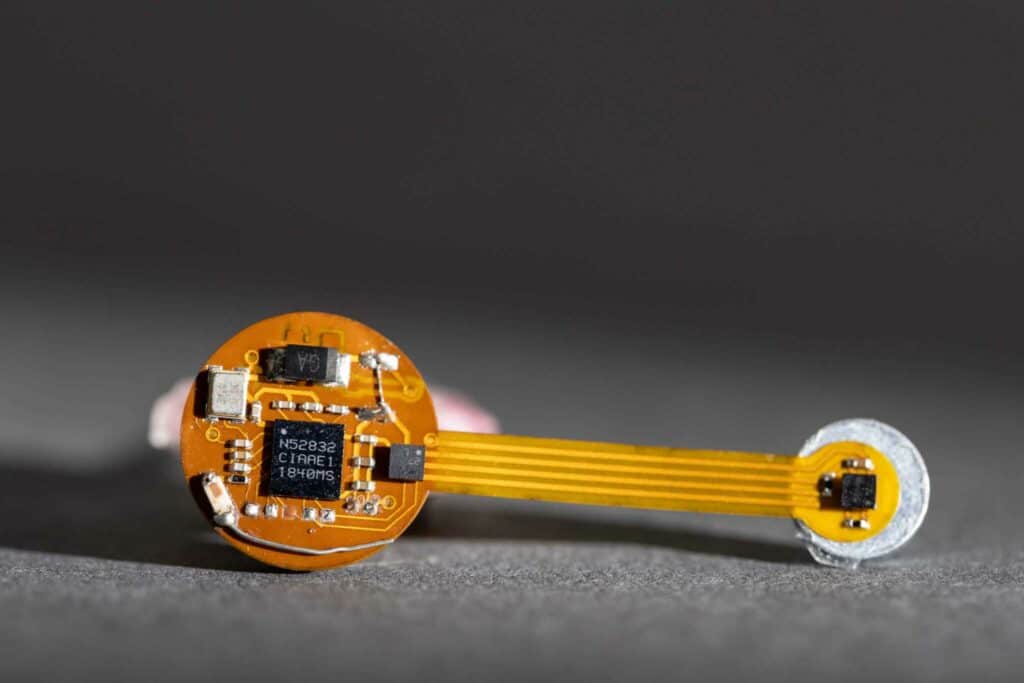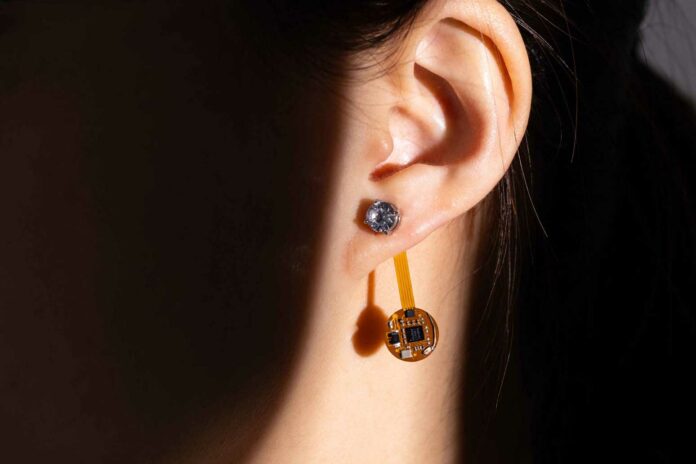Monitoring body temperature is crucial for detecting fever and understanding its correlation with eating, exercising, and stress. However, achieving this continuous monitoring poses a significant challenge.
University of Washington researchers introduced the Thermal Earring, a first-of-its-kind smart earring that enables a reliable wearable solution for continuous temperature monitoring.
In a recent study involving six participants, a smart earring was more effective than a smartwatch at sensing skin temperature during rest periods. Additionally, it could monitor signs of stress, eating, exercise, and ovulation.
The smart earring prototype is compact, similar in size and weight to a small paperclip, and has a battery life lasting 28 days. It features two temperature sensors: one attached to the wearer’s ear using a magnetic clip and another hanging about an inch below to estimate room temperature. The earring can also be customized with fashion designs without compromising its performance.
Co-lead author Qiuyue (Shirley) Xue, a UW doctoral student in the Paul G. Allen School of Computer Science & Engineering, said, “I wear a smartwatch to track my health, but I’ve found that a lot of people think smartwatches are unfashionable or bulky and uncomfortable. I also like to wear earrings, so we started thinking about what unique things we can get from the earlobe. We found that sensing the skin temperature on the lobe, instead of a hand or wrist, was much more accurate. It also allowed us to have part of the sensor dangle to separate ambient room temperature from skin temperature.”
Along with making the earring power consumption efficient, the earring consists of a Bluetooth chip, a battery, two temperature sensors, and an antenna. Instead of connecting to a device that consumes more power, the smart earring utilizes Bluetooth advertising mode, which is a transmission indicating its availability for pairing. After reading and transmitting the temperature data, it enters deep sleep mode to conserve power.

Since continuous monitoring of earlobe temperature is rare, the team also investigated potential applications to prompt future research. In a group of five patients with fevers, the average earlobe temperature increased by 10.62 degrees Fahrenheit (5.92 degrees Celsius) compared to the temperatures of 20 healthy patients. This indicates the potential of the earring for continuous fever monitoring.
The core body temperature usually remains stable unless there’s a fever. Unlike this, earlobe temperature varies, opening up several innovative applications for the Thermal Earring. In initial tests, the earring detected temperature changes associated with eating, exercising, and experiencing stress. When tested on six users at rest, the earring’s temperature reading showed an average variation of 0.58°F (0.32°C), falling within the range of 0.28°C to 0.56°C required for ovulation and period tracking. In comparison, a smartwatch showed a variation of 0.72°C.
The findings are preliminary. More data is required to train the models for usage, and more thorough testing is also needed before making it commercial.
Journal Reference:
- Xue, Qiuyue Shirley and Liu, Yujia and Breda, Joseph and Springston, Mastafa and Iyer, Vikram and Patel, Shwetak. Thermal Earring: Low-power Wireless Earring for Longitudinal Earlobe Temperature Sensing. Proceedings of the ACM on Interactive, Mobile, Wearable and Ubiquitous Technologies. DOI: 10.1145/3631440
